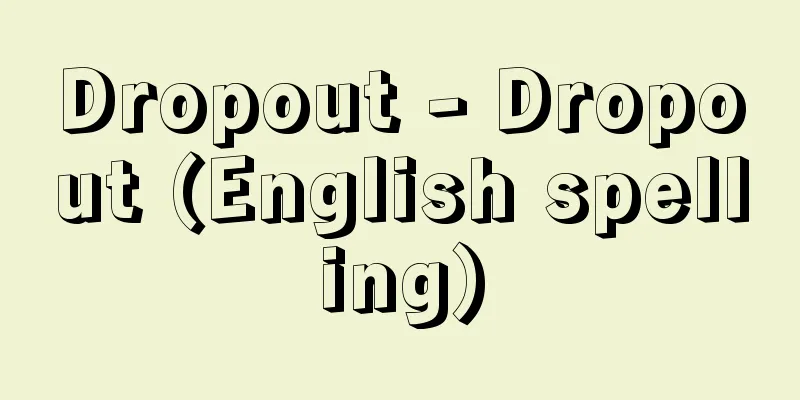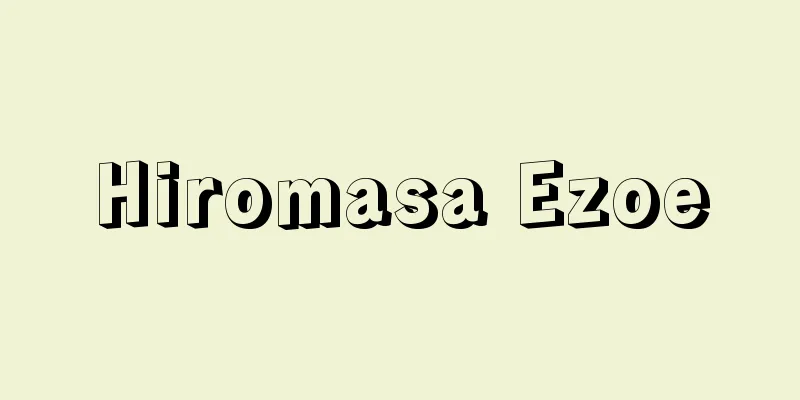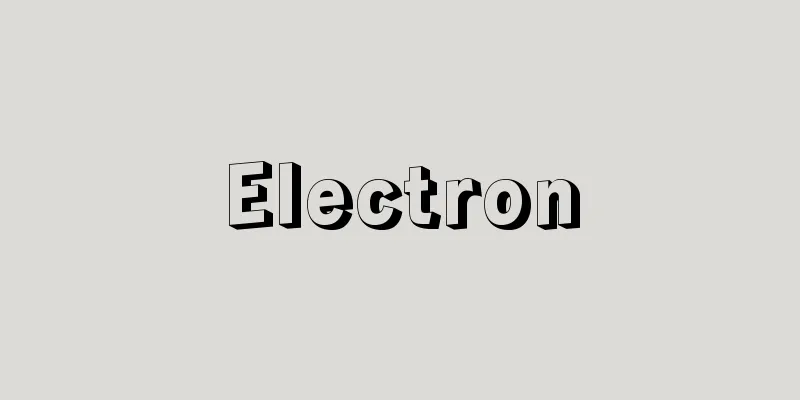After-school care - Gakudo Hoiku

|
This is a service that provides after-school care and long holidays for elementary school children from dual-income families and single-parent families. Specifically, based on the provisions of Article 6-3, Paragraph 2 of the Child Welfare Act, it can be explained as a childcare service (after-school child healthy development service) that provides appropriate play and living space for children who are attending elementary school and whose parents are not at home during the day due to work, etc., using spare classrooms at elementary schools and children's centers after school hours, etc., to promote their healthy development. The "after-school" refers to long holidays such as summer vacation. It plays a role in guaranteeing the life of children from dual-income families and single-parent families after school and on school holidays, and protecting the working rights of parents and the life of the family. The place where after-school care is provided is called an "after-school child care center," but depending on the city, town, or village, it is called various names such as "after-school children's club," "children's club," "children's club for families with absent parents," and "after-school child care club." [Takashi Nakamura July 19, 2017] historyAccording to a report by the National After-School Care Liaison Council, a private organization formed in 1967 (Showa 42), after-school care began in private daycare centers in the late 1940s. Initially, the Child Welfare Law stipulated that children without guardians at home during the day could attend daycare centers, but in reality, after-school care was rarely provided due to the situation where the centers were filled with infants and toddlers alone. With the trend toward nuclear families and an increase in dual-income families, the number of families needing after-school care increased year by year, and the Ministry of Health and Welfare (now the Ministry of Health, Labor and Welfare) initially decided to provide children's centers as a measure to deal with children at home when they were not at home, but as the need for after-school care increased, local governments and the national government began to provide subsidies to existing after-school care centers that had been established. In 1997, the Child Welfare Act was revised and after-school care was legalized as the "After-school Child Health Development Project." This meant that municipalities had to provide consultation and advice on the use of after-school care and make efforts to promote this project. After this regulation was enacted, after-school care came to be called "after-school children's clubs," the children who were eligible for the service came to be called "after-school children's clubs," and the staff who worked there came to be called "after-school children's instructors." As of May 1, 2016, there were 23,619 after-school children's clubs with 1,093,085 registered children (according to the Ministry of Health, Labor and Welfare). [Takashi Nakamura July 19, 2017] Implementation of the new child and child-rearing support systemThe "New Child and Childcare Support System" that started in 2015 revised various after-school care systems. The main changes are as follows: (1) Due to the amendment of the Child Welfare Act in 2012 (enforced in April 2015), the provision that stipulated the target children as “approximately under 10 years of age” was deleted, and all elementary school children who require childcare became eligible. (2) The "Standards for the Facilities and Operation of After-School Child Health Development Programs" (Ministry of Health, Labour and Welfare Ordinance No. 63 of April 30, 2014) was formulated and promulgated. Based on this standard, municipalities are to establish their own standards by ordinance. (3) The above standards stipulate that two or more staff members qualified as “after-school child support workers” must be employed, which requires that such staff members take and complete a certification training course administered by the prefectural governor (details are provided below). (4) Taking into account the diversity of after-school childcare management, in order to clarify the standard of living environment and management content that should be guaranteed to children in after-school childcare groups and to ensure the stability and continuity of the business, the "After-School Childcare Club Guidelines" formulated in 2007 were revised and the "After-School Childcare Club Management Guidelines" were formulated to make the standards more specific. [Takashi Nakamura July 19, 2017] Installation type(1) Public: Operated by municipalities (directly). (2) Public/Private: Established by municipalities, their operation is entrusted to local steering committees, social welfare councils, parents' associations, etc. (3) Privately-run after-school care. These are run by social welfare organizations, educational organizations, NPOs, private companies, etc. They also receive subsidies from the government. [Takashi Nakamura July 19, 2017] Location(1) Spare classrooms (vacant classrooms) on the school grounds. (2) An independent, dedicated facility on the school grounds. (3) Inside a children's hall or children's center. (4) Facilities exclusively for off-campus use. (5) Other public facilities (community centers, public nursery schools, public kindergartens, etc.). (6) Within private nursery schools, kindergartens, and social welfare corporation facilities. (7) Private houses, apartments, etc. [Takashi Nakamura July 19, 2017] After-school child guidance counselorThere are more than 90,000 instructors working nationwide, but their employment and status vary. Until 2014, some municipalities and after-school childcare facilities required qualifications and licenses such as "childcare worker" or "teacher" as employment conditions, but there were no national qualifications for instructors. However, with the amendment of the Child Welfare Act in 2012 (enforced in April 2015), the standards for after-school childcare were set by Ministry of Health, Labor and Welfare ordinance, and qualifications and placement standards for instructors were set. Instructors now need to be qualified as "after-school child support workers." After-school child support workers are people who meet one of nine criteria, such as having qualifications as a childcare worker, social worker, or teacher, and are required to take a 24-hour certified qualification training course in 16 subjects implemented by the prefecture. On the other hand, there are many problems and issues regarding the employment and status of instructors. 80% of them are non-regular employees, and many work in the afternoon, with no guaranteed time for meetings or preparation. In addition, the harsh reality is that nearly 70% of instructors have an annual income of less than 1.5 million yen, and half of them have been with the company for 1-3 years. It is necessary to improve this harsh reality by establishing the qualifications for "after-school child support workers" and by building on the newly established and improved after-school child care system under the new child and child-rearing support system. [Takashi Nakamura July 19, 2017] Children's Centers and After-School CareSome municipalities provide after-school care at children's halls (children's centers). When they are provided at children's halls, there are various methods, ranging from those that provide special rooms separate from the rooms children usually spend their time in, to those that provide no special care at all. For a long time, the Ministry of Health, Labor and Welfare had a policy that measures for children left at home should be carried out at children's halls, but in 1991 it positioned measures for children left at home as a necessary project separate from the activities of children's centers and established a subsidy system. However, in reality, it is not rare for after-school care facilities to be located alongside children's halls and children's centers. [Takashi Nakamura July 19, 2017] "All-Child Measures Project" and After-School CareCreating safe play areas and places for all children after school is the role of children's centers. However, with the lack of progress in the development of children's centers and the increase in spare classrooms in elementary schools due to the declining birthrate, municipalities have begun their own projects using spare classrooms. These are called "All Children's Measures Projects." Examples of these are the "Children's Lively After School Project" started by Osaka City in 1992 and the "Hamako Fureai School Project" started by Yokohama City the following year in 1993. Some municipalities have started the "All Children's Measures Projects" for financial reasons and have abolished ("integrated") or reduced (subsidy reductions, etc.) after-school childcare services. Considering that a subsidy system was established for after-school childcare in 1991 and that it was distinguished from children's center activities, there is a clear distinction between the "All Children's Measures Projects," whose purpose is to create play areas and places, and after-school childcare, which is to guarantee a "place to live," and it is not acceptable to abolish or reduce after-school childcare services. [Takashi Nakamura July 19, 2017] After-school children's comprehensive planSince 2007, the Ministry of Education, Culture, Sports, Science and Technology and the Ministry of Health, Labour and Welfare have worked together to promote the "After-School Children's Plan," a comprehensive after-school program. The Ministry of Health, Labour and Welfare's plan was to increase the number of after-school children's clubs by 20,000 by utilizing school facilities, while the Ministry of Education, Culture, Sports, Science and Technology's plan was to start new "After-School Children's Classrooms" (using school facilities for play and experiential activities). Initially, it was planned to promote the two programs "integrated or in cooperation," but because the two programs have different objectives, roles and implementation methods, they have not been "integrated," but rather have been implemented as an expansion and cooperation of each program. Based on this, the "After-School Children's Comprehensive Plan," which has been promoted since 2015, was newly formulated. The "After-School Children's Comprehensive Plan" calls for increasing the number of children accepted into after-school childcare to 300,000 in five years (1.2 million by the end of fiscal year 2019), making full use of school facilities, and implementing after-school childcare and "after-school children's classrooms" in an "integrated or coordinated" manner at approximately 20,000 locations, with more than 10,000 of these being implemented in an "integrated" manner. There are problems with the "integration" of the locations, operations, and staff of after-school childcare and "after-school children's classrooms." The purpose and role of after-school childcare, as explained in detail in the "After-School Children's Club Management Guidelines," is to guarantee a "place to live," and, as with the "All Children's Measures Project," its role is very different from that of "After-School Children's Classes," which aims to create playgrounds and places to belong for all children and provide experiential activities. Therefore, if both programs are to be implemented as an "integrated" program within a school, in order to enable after-school care to fulfill its original role, the implementation must be in accordance with the ordinance based on standards, and ensure a continuous life for children with dedicated rooms and full-time instructors based on the "After-School Children's Club Management Guidelines." [Takashi Nakamura July 19, 2017] "Nakayama Toru, Osaka Childcare Research Institute, and Osaka After-School Childcare Liaison Council eds., "The After-School Children's Plan" and After-School Childcare: Exploring Integration and Cooperation with the All-Children's Policy Project" (2007, Jichi Kenkyusha)" ▽ "Ikemoto Mika ed., "Thinking about Children's After-School Activities: After-School Childcare Issues in Comparison with Other Countries" (2009, Keiso Shobo)" ▽ "Japan Society for After-School Childcare Studies ed., "Contemporary After-School Childcare in Japan" (2012, Shunposha)" ▽ "National After-School Childcare Liaison Council ed., "After-School Childcare Handbook," 2nd revised edition (2015, Gyosei)" [Reference item] | |Source: Shogakukan Encyclopedia Nipponica About Encyclopedia Nipponica Information | Legend |
|
共働きやひとり親家庭などの小学生を、放課後や長期休業日に保護者にかわって保育すること。具体的には、児童福祉法第6条の3第2項の規定に基づき、小学校に就学している児童であって、その保護者が労働等により昼間家庭にいないものに対し、授業の終了後等に小学校の余裕教室や児童館等を利用して適切な遊びおよび生活の場を与えて、その健全な育成を図る保育事業(放課後児童健全育成事業)と説明できる。授業の終了後等の「等」は夏休みなどの長期休業日をさす。共働き家庭やひとり親家庭などの子どもの放課後と学校休業日の生活を保障し、親の働く権利と家族の生活を守る役割を担う。学童保育が行われる場所を「学童保育所」というが、市町村によって、「放課後児童クラブ」「児童クラブ」「留守家庭児童会(室)」「学童保育クラブ」などと、呼び名はさまざまである。 [中村強士 2017年7月19日] 歴史1967年(昭和42)に結成された民間の学童保育専門団体である全国学童保育連絡協議会の報告では、学童保育は1940年代後半から民間保育園などで始まったとされている。当初、児童福祉法には、日中家庭に保護者がいない児童も保育所に入ることができる旨の規定はあったものの、実際には乳幼児だけで満杯になるなどの状況から、学童保育はほとんど行われていなかった。核家族化の進行、共働き家庭の増加などで、学童保育を必要とする家庭が年々増えるなか、当初厚生省(現、厚生労働省)は留守家庭児童対策として児童館で対応することにしていたが、学童保育ニーズの高まりから、これまでつくられてきた既存の学童保育所に対して自治体や国からも補助金が出るようになった。 1997年(平成9)に児童福祉法が改正され、学童保育が「放課後児童健全育成事業」として法制化された。これによって、市町村は学童保育の利用に関する相談・助言を行い、本事業を促進するよう努めなければならないこととなった。本規定の成立後、学童保育を「放課後児童クラブ」、対象児童のことを「放課後児童」、働く職員のことを「放課後児童指導員」とよぶようになった。2016年(平成28)5月1日時点で、放課後児童クラブ数は2万3619か所、登録児童数は109万3085人(厚生労働省調べ)。 [中村強士 2017年7月19日] 子ども・子育て支援新制度の施行2015年(平成27)からスタートした「子ども・子育て支援新制度」により、学童保育に関する各制度が改正された。おもな改正点は以下のとおりである。 (1)2012年の児童福祉法改正(2015年4月施行)により、対象児童を規定していた条文「おおむね10歳未満」が削除され、保育が必要なすべての小学生が対象になった。 (2)「放課後児童健全育成事業の設備及び運営に関する基準」(平成26年4月30日厚生労働省令第63号)が策定・公布された。市町村はこの基準を踏まえて、条例で基準を定めることになった。 (3)上記基準には「放課後児童支援員」という資格をもった職員を2人以上配置することが定められたため、職員は都道府県知事が行う認定資格研修を受講し、修了することが必要になった(詳細は後述)。 (4)学童保育の運営の多様性を踏まえつつ、学童保育において集団のなかで子どもに保障すべき生活環境や運営内容の水準を明確化し、事業の安定性および継続性を確保する観点から、2007年に策定された「放課後児童クラブガイドライン」を見直し、基準をより具体的な内容にするため「放課後児童クラブ運営指針」が策定された。 [中村強士 2017年7月19日] 設置形態(1)公立公営 市町村が運営(直営)。 (2)公立民営 市町村が設立して運営は地域運営委員会、社会福祉協議会、父母会・保護者会などに委託。 (3)民立民営 民間学童保育。社会福祉法人や学校法人、NPO法人、民間企業などが運営。行政からの補助もある。 [中村強士 2017年7月19日] 設置場所(1)学校敷地内の余裕教室(空き教室)。 (2)学校敷地内の独立専用施設。 (3)児童館・児童センター内。 (4)学校外専用施設。 (5)その他の公的施設(公民館、公立保育園、公立幼稚園など)。 (6)私立保育園や私立幼稚園、社会福祉法人の施設内。 (7)民家・アパートなど。 [中村強士 2017年7月19日] 放課後児童指導員全国には9万人以上の指導員が働いているが、雇用や身分等はさまざまである。2014年度までは、市町村や学童保育の施設によっては、採用条件等で「保育士」「教諭」などの資格・免許が求められるところもあったが、国が定めた指導員の資格はなかった。しかし、2012年の児童福祉法改正(2015年4月施行)により、学童保育の基準が厚生労働省令で定められ、指導員については資格と配置基準が定められた。指導員には「放課後児童支援員」という資格が必要になった。放課後児童支援員は、保育士や社会福祉士、教諭などの資格をもっていることなど9項目のいずれかを満たした者で、都道府県が実施する16科目24時間の認定資格研修を受講することが必要である。一方、指導員の雇用や身分等については問題や課題が多い。非正規職員が8割を占めており、午後からの勤務で、打ち合わせや準備の時間が仕事として保障されていないところが多い。また、7割近い指導員が年収150万円未満であり、勤続1~3年の指導員が半数を占めている厳しい現実がある。「放課後児童支援員」の資格はもとより、その他、子ども・子育て支援新制度によって新設・改善された学童保育制度を基盤にして、こうした厳しい現実を改善することが必要である。 [中村強士 2017年7月19日] 児童館と学童保育市町村によって、学童保育を児童館(児童センター)で実施するところがある。児童館で実施するといっても、通常子どもたちが過ごす部屋とは区別した専用室を設けているところから、特別な対応をしないところまでさまざまである。厚生労働省は長い間、留守家庭児童対策は児童館で行うという方針であったが、1991年度から留守家庭児童対策は児童館活動とは別に必要な事業として位置づけ、補助制度を設けた。しかし、現状は児童館・児童センターに学童保育施設を併置していることが少なくない。 [中村強士 2017年7月19日] 「全児童対策事業」と学童保育すべての子どもを対象とした放課後の安全な遊び場づくり・居場所づくりは、本来児童館がこれを担う役割をもっている。しかし、児童館の整備が進まないことと同時に、少子化による小学校の余裕教室の増加に伴い、市町村が余裕教室を活用して独自の事業を始めている。これが「全児童対策事業」といわれるものである。1992年から大阪市が始めた「児童いきいき放課後事業」、翌1993年から横浜市が始めた「はまっこふれあいスクール事業」などがこれにあたる。いくつかの市町村では、財政的な理由もあり、「全児童対策事業」を始めることで学童保育を廃止(「統合」)あるいは縮小(補助金削減など)するところがでてきた。1991年に学童保育に補助制度が設けられ、児童館活動とは区別された点を考えれば、その目的が遊び場づくり・居場所づくりにとどまる「全児童対策事業」と、「生活の場」の保障である学童保育とは明確に区別されるものであり、学童保育を廃止・縮小することはあってはならないことである。 [中村強士 2017年7月19日] 放課後子ども総合プラン2007年度から文部科学省と厚生労働省が連携して総合的な放課後対策「放課後子どもプラン」を推進した。厚生労働省は学校施設などを活用して放課後児童クラブを2万か所増やす、文部科学省は新しく「放課後子ども教室」(学校施設を活用して遊びや体験活動などを行う)を始めるというプランだった。当初、二つの事業を「一体的あるいは連携」して推進するとしていたが、二つの事業は目的・役割や実施方法が異なるため、「一体化」ではなく、それぞれの事業の拡充と連携という形で実施されてきた。これをもとに新たに策定されたのが2015年度から推進されている「放課後子ども総合プラン」である。 「放課後子ども総合プラン」は、学童保育の受け入れ児童数を5年間で30万人(2019年度末までに120万人)に増やすこと、学校施設を徹底活用すること、約2万か所で学童保育と「放課後子供教室」を「一体的に又は連携して実施」し、うち1万か所以上を「一体型」で実施するというものである。学童保育と「放課後子供教室」との場所や事業、職員の「一体化」には問題がある。学童保育の目的・役割は「放課後児童クラブ運営指針」に詳細に説明されているとおり「生活の場」の保障であり、「全児童対策事業」と同様に、すべての子どもを対象にした遊び場や居場所づくり、体験活動を目的とする「放課後子供教室」とはその役割が大きく異なる。そのため、両事業を学校内で「一体型」として実施する場合には、学童保育の本来の役割が果たせるよう、基準に基づき条例に従い、かつ「放課後児童クラブ運営指針」に基づいた専用室と専任指導員のもとで継続した生活が保障される実施形態にする必要がある。 [中村強士 2017年7月19日] 『中山徹・大阪保育研究所・大阪学童保育連絡協議会編『「放課後子どもプラン」と学童保育――全児童対策事業との一体化・連携を探る』(2007・自治体研究社)』▽『池本美香編著『子どもの放課後を考える――諸外国との比較でみる学童保育問題』(2009・勁草書房)』▽『日本学童保育学会編『現代日本の学童保育』(2012・旬報社)』▽『全国学童保育連絡協議会編『学童保育ハンドブック』第2次改訂版(2015・ぎょうせい)』 [参照項目] | |出典 小学館 日本大百科全書(ニッポニカ)日本大百科全書(ニッポニカ)について 情報 | 凡例 |
<<: Student Labor Mobilization - Gakukinro Doin
Recommend
Giant sandfly - Giant sandfly
...The closely related O. p . japonica (illustrat...
Comstock, Anthony
Born March 7, 1844 in New Canaan, Connecticut Died...
Pear orchard - Rien
A term referring to the theatrical world, especial...
The Rise and Fall of the Galactic Empire
…He started writing science fiction while he was ...
Khanty (English spelling)
Formerly called the Ostyak people, they call thems...
Hašek (English spelling) Jaroslav Hašek
Czechoslovakian writer. Born in Prague to a poor ...
Wave Antenna - Wave Antenna
...All of these antennas are grounded, with a pow...
Yoshinari Mori
1523-1570 A military commander in the Sengoku per...
Onshi Zaidanboshi Aiikukai - Onshi Zaidanboshi Aiikukai
...Aiiku Mura was established as a social work fa...
Bukeshohatto - Various Laws of the Samurai
The basic law enacted by the Edo Shogunate to con...
Ahom
... Since ancient times, various Mongoloid people...
Incas - Inca
...means sun in Quechua. In the religion of the I...
EC40 - EC40
In the early days of AC electrification, the vehi...
Polje (English spelling)
A long, narrow depression found in limestone areas...
Ganjoji Temple
This temple is of the Shingon sect of Buddhism, l...
![Toki [city] - Toki](/upload/images/67cc546246711.webp)








